Warning: This post contains spoilers for the first four episodes of Westworld.
Technically, when you’re watching HBO’s Westworld, the Western sci-fi series about a futuristic theme park where the artificially intelligent androids make the tourists’ dreams come true, you’re watching a show within a show. Everything the robotic hosts say and do is totally scripted, so it’s fitting that the story is full of prominent cultural references. The show seems to be setting up a robot uprising, which is perhaps why so many of the references are ominous.
To make sense of all the quotes, symbols and imagery here’s everything Westworld has referenced so far.
Quotes From Literature
Shakespeare
Dolores’s father, Peter Abernathy (Louis Herthum), was a professor in another life, so he quotes Shakespeare a lot. He recites lines from King Lear, The Tempest, and Dr. Ford quotes Julius Caesar, but the most important one is the seemingly viral one he whispered to his daughter: “these violent delights have violent ends.” (It’s from that downer Romeo and Juliet speech the friar delivers when he’s secretly marrying Romeo to Juliet.) This seems to hint that people will pay for all this excessive bloodshed.
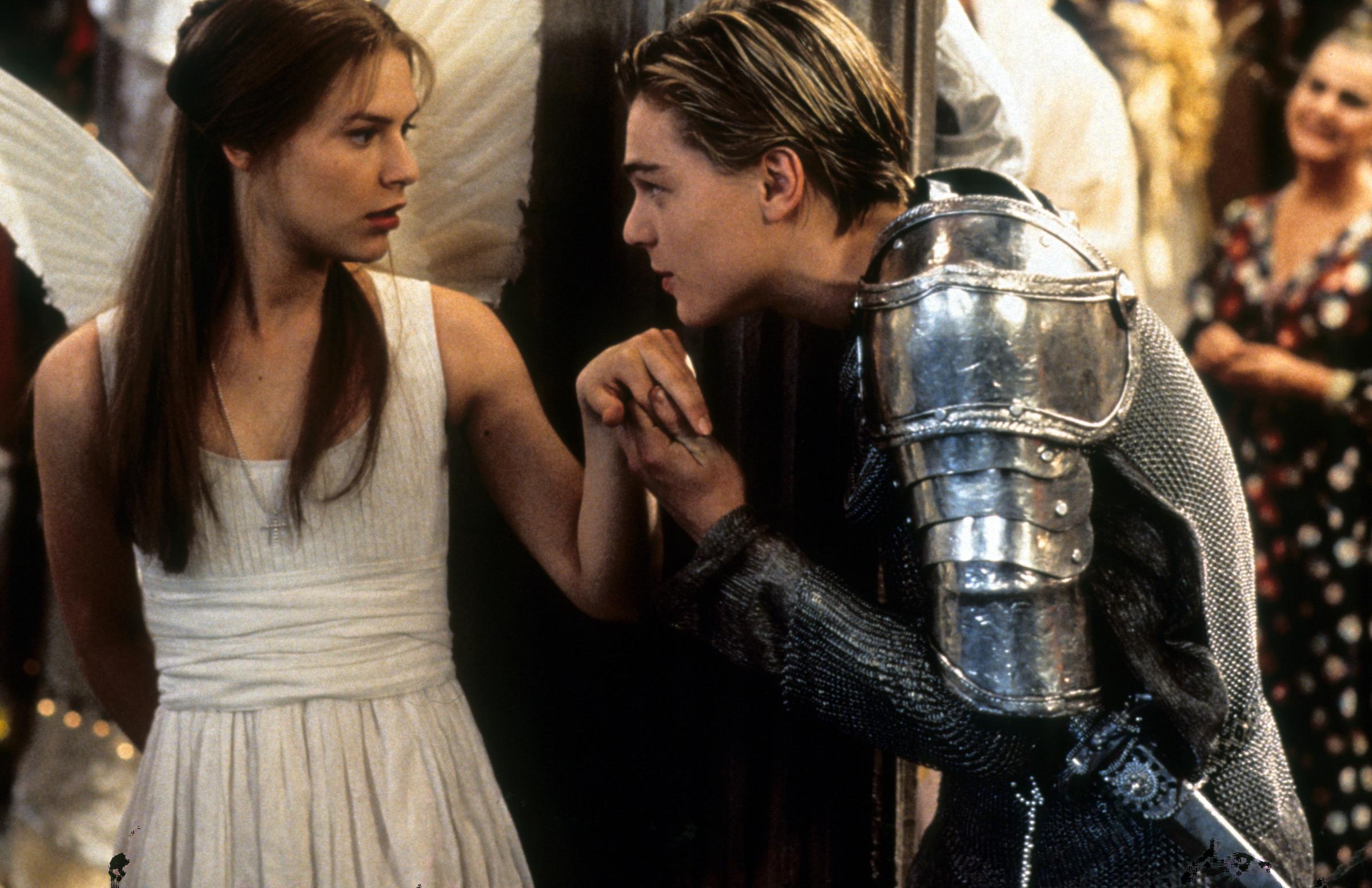
Also of note, Abernathy tells Dr. Ford by warning: “by most mechanical and dirty hand…I will have such revenges on you both.” What they are yet I know not, but they shall be the terrors of the earth.” Part King Lear and part Henry IV, this tells us that Abernathy not only wants revenge, but he probably knows he’s a machine.
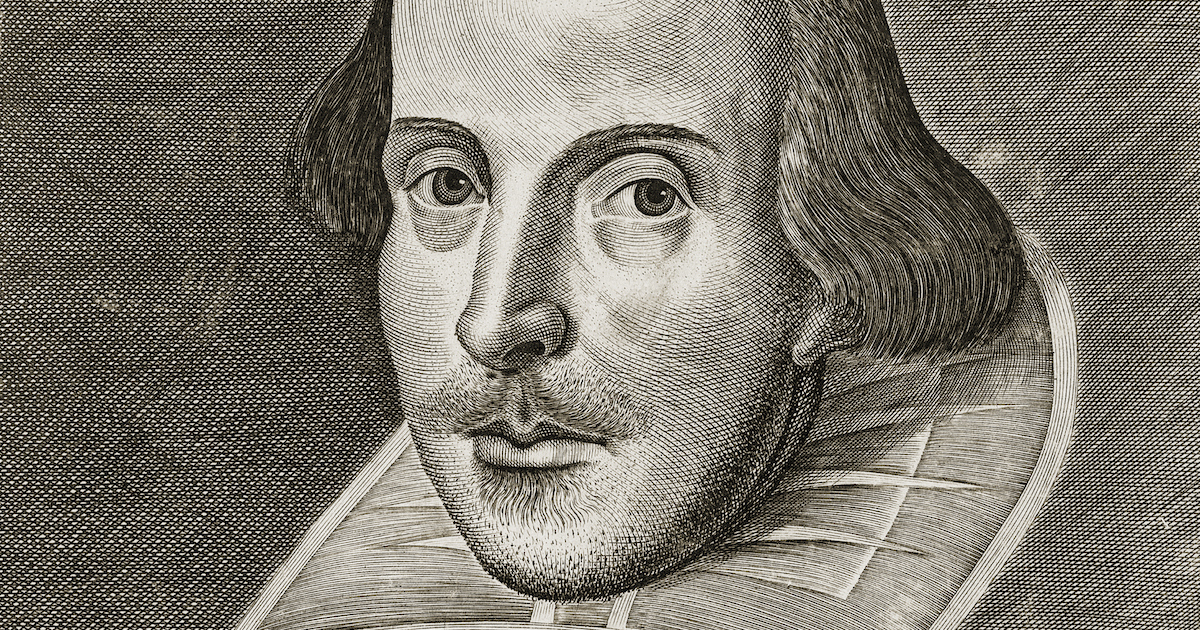
At the end of the seventh episode, Dr. Ford orders loyal Bernard to take out Theresa for messing with his masterful creation. Before the kill, he tells her in his chilly demeanor, “for in that sleep, what dreams may come.” It’s a line borrowed from Hamlet, but the show appears to have chopped one key piece off. The full quote is “for in that sleep of death, what dreams may come.” It’s from the soliloquy that opens the classic Shakespearean tragedy, when the Prince of Denmark is contemplating whether suicide might be better than living. But he notes one catch. Even after death, there may be nightmares. Westworld’s hosts die repeatedly as entertainment for the guests, but when they come back to life, they can still remember their traumas as “dreams,” so it’s a fitting literary touchstone.
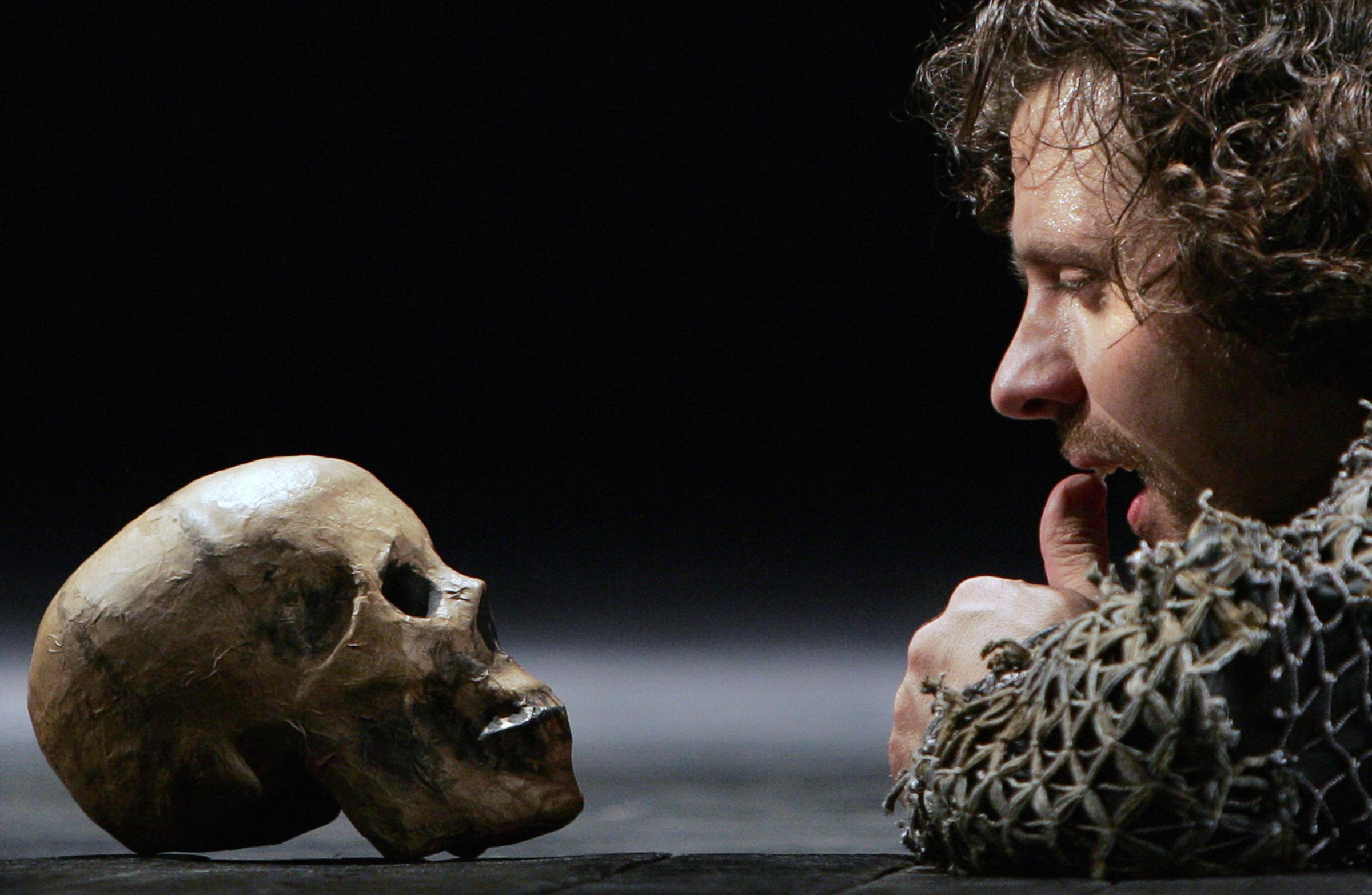
Books
During the really tough moments for androids, we hear technicians say “may you rest in a deep and dreamless slumber.” In the Sherlock mystery A Study in Scarlet, author Arthur Conan Doyle describes a days-long deep sleep this way. (Think of it as putting your computer in a restorative sleep mode, because they are machines.)
When Dr. Ford asks Abernathy about his identity, he gives a cryptic answer: “rose is a rose is a rose.” Gertrude Stein frequently used this line in her work as a reference to Juliet’s famous speech in the Shakespearean play. When Juliet delivers the “rose” line, she’s arguing that a person’s name shouldn’t matter because it doesn’t change who they are.
In the eighth episode, Dr. Ford quotes Mary Shelley’s Frankenstein to rationalize the hit on Theresa, telling Bernard that “one man’s life or death is but a small price for the dominion I should acquire.” The line from Captain Walton’s fourth letter in the book doesn’t just add grandeur to the scene. In the book, the letter revealed that Walton would sacrifice anyone in the way of his obsessive ambition, so it’s a perfect thematic complement that hints Dr. Ford was never above killing people for power.
“Contrapasso”
The fifth episode’s title, “Contrapasso,” refers to the punishment of sinners in Dante Alighieri’s Inferno. Under hell’s governing law, sinners must live out punishments that resemble their crimes. Example: a scheming “fortune teller” would be doomed to “walk backwards for eternity, with their heads turned around to face behind them,” according to the Mandelbaum translation of the epic poem. The episode reveals nothing about case-specific retribution, but if the park does dole out shaming punishments, the show would segue into a much darker world, and obliterate the theme park’s consequence-free pitch to tourists.

Art
Leonardo DaVinci
The 3D apparatus is a reference to the Vitruvian Man, DaVinci’s famous drawing. When we see the machinery in the show, it’s being dunked into a white liquid, possibly acting as a kind of mold for the roughly 2,000 bots. The original artwork emphasizes a human figure with the ideal proportions. Over at the old amusement park, the show constantly reminds us that the hosts are becoming more and more human.

Hieronymus Bosch
As the writer presents his gameplan for a new ambitious story for the park, he brags that it “will make Hieronymus Bosch look like he was doodling kittens.” Bosch was a Netherlandish painter who created haunting, chaotic masterpieces filled with religious imagery. He’s best known for The Garden of Earthly Delights – which tells the story of humans who give into their temptations and are judged and ultimately punished in an apocalyptic setting.
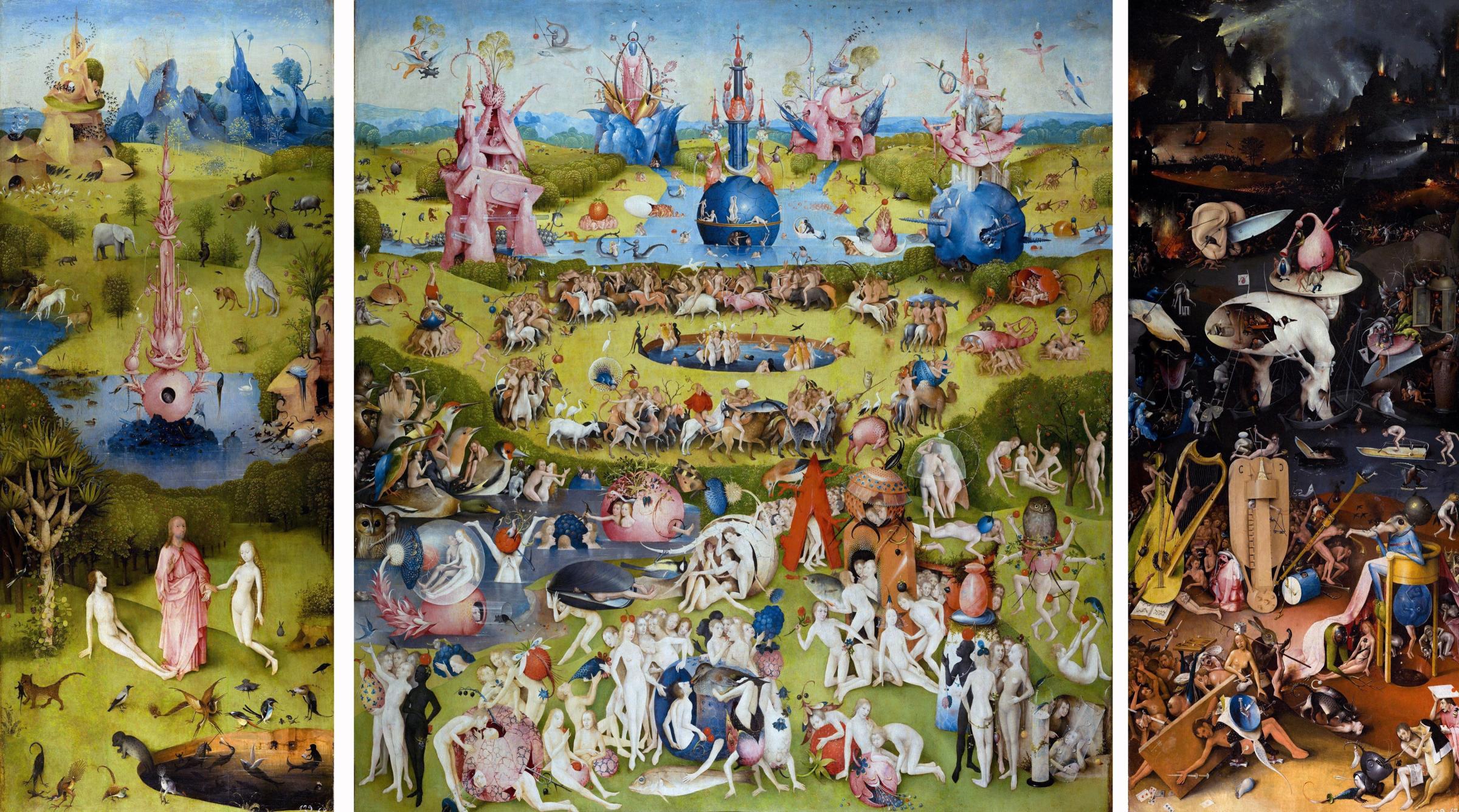
Alice’s Adventures in Wonderland
Actor Evan Rachel Wood and creator Lisa Joy have both said that Dolores evokes Alice from Alice’s Adventures in Wonderland. Maybe it’s the 1) tied back blonde hair, or 2) the powder blue high-waisted dress or 3) the fact that she’s a blank slate who stumbles into a wacky fantasy world full of anthropomorphic creatures, much like the iconic character.
One minute Dolores is painting horses in the blissful area of the park, and another minute, she’s galloping home to a traumatic experience. “I’m in a dream,” she obediently tells her technicians during these trying times. The Lewis Carroll story and subsequent Disney adaptations also explain away that freakshow of a tea party by concluding it was all a dream, so this comparison seems about right.

For the park’s oldest host, there’s no better cultural touchstone than Alice, a point the show drives home when a grief-stricken Bernard asks Dolores to read this passage from the classic story. “Dear dear, how queer everything is today and yesterday things went on just as usual. I wonder if I’ve been changed in the night.” After she notes that these recommended readings always deal with change, he adds “people read about the things they want the most and experience the least.”
The Alice prose hits the nail on the head. Dolores is dredging up her first real memories of violent events from “yesterday” and even further into her past. Westworld might be more twisted than Wonderland, but she’s just as puzzled by her changing reality as Alice.
At the beginning of the seventh episode, we see Bernard at his son Charlie’s hospital bedside, reading a key passage from Alice’s Adventures in Wonderland: “If I had a world of my own everything would be nonsense. Nothing would be what it is, because everything would be what it isn’t.” This Mad Hatter quote welcomes us into an episode that examines how we perceive our world and everything in it.
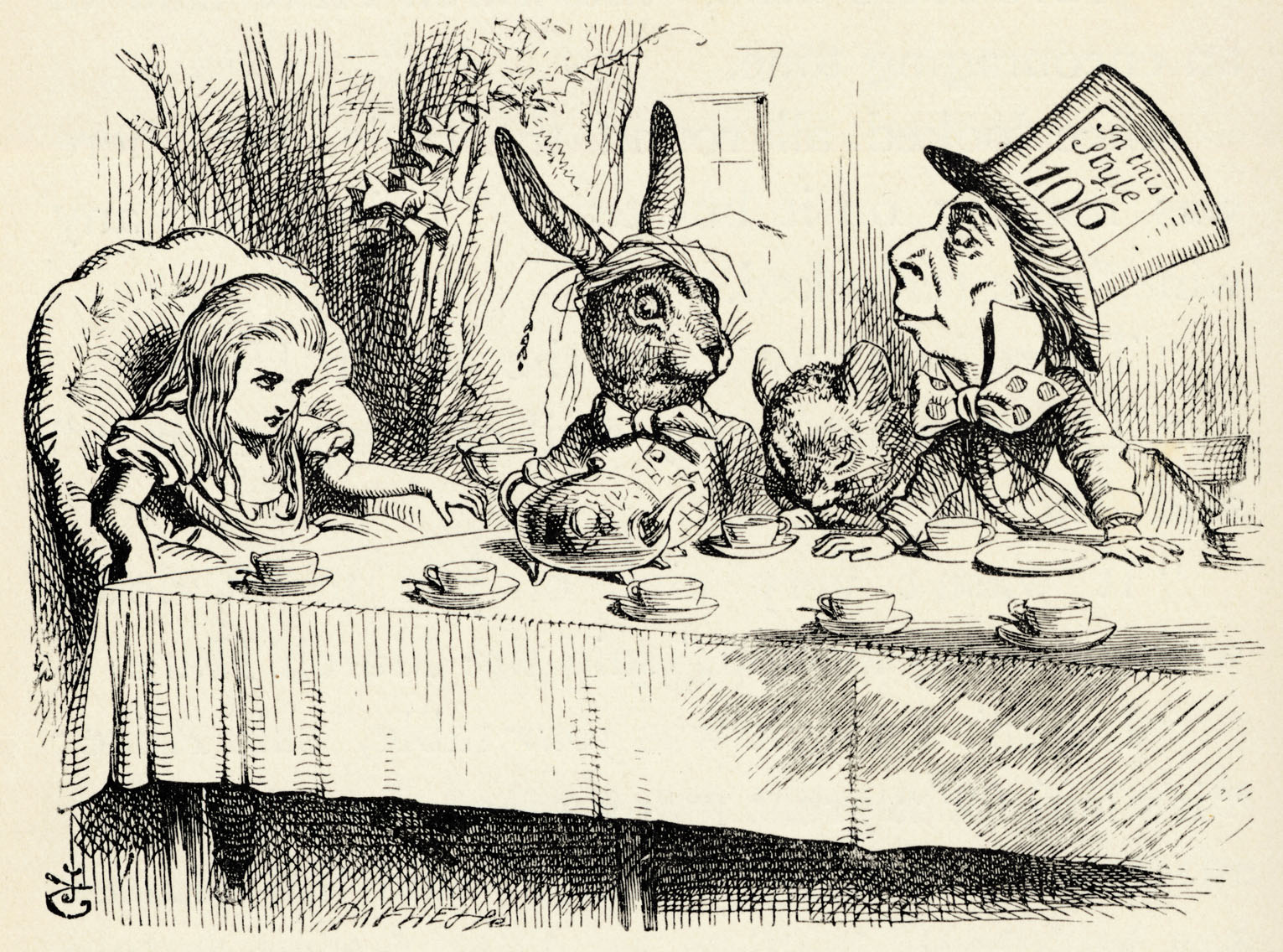
Pop Music
Though artificial, this is supposed to be a strictly Old West setting. But the player piano serves up several catchy tunes even when it’s splattered with blood. Here are some of the highlights. Ithits us with Soundgarden’s “Black Hole Sun” from 1994, and there’s also an orchestral cover of “Paint it Black” by the Rolling Stones. Both songs successfully paint the scenes with a dark cast, like Westworld paints most things except for Dolores’s cheery painting. The songs express a wish for a blacked out sun because the world’s always being such a jerk. Speaking of loathing the light of day, on the show, the shade “black” brands people who take the evil path in life.
The piano player also plays a cover of Radiohead’s “No Surprises,” a melancholy song from the album OK Computer. The lyrics describe voiceless people who have “bruises that never heal,” so it’s an eerie — and apt soundtrack — for the scene in question.
Michael Crichton
Westworlds collide! This Westworld is based on an original 1973 movie written and directed by Michael Crichton. The presence of the prolific author, who also wrote the novel Jurassic Park, is felt throughout. Ed Harris’s (human) sinister character, the Man in Black, is always on hand to slide in and rain bad news on everyone, notably wears all black. So did Yul Brynner as the Gunslinger (robot) in the original movie. These two characters have different drives, but they’re both scary.
Another scene that reimagines the original movie follows Williams as he prepares to enters the massive park for the first time. Tellingly, his tour guide tells him to make a big choice: black or white cowboy hat. He reaches for a white one, and proves he’s the most compassionate visitor yet. Again, we see that the shade black represents evil choices, and white hats are for good guys. In the third episode, when Logan (Ben Barnes) complains about “playing white hat,” the show reminds us that white hats are for heroic cowboy adventures, while black headgear is the mark of evil, like in the original movie.
Overall, the whole premise of Westworld — a theme park with impressive technological creatures that’s increasingly approaching the danger zone — echoes Crichton’s work on Jurassic Park.
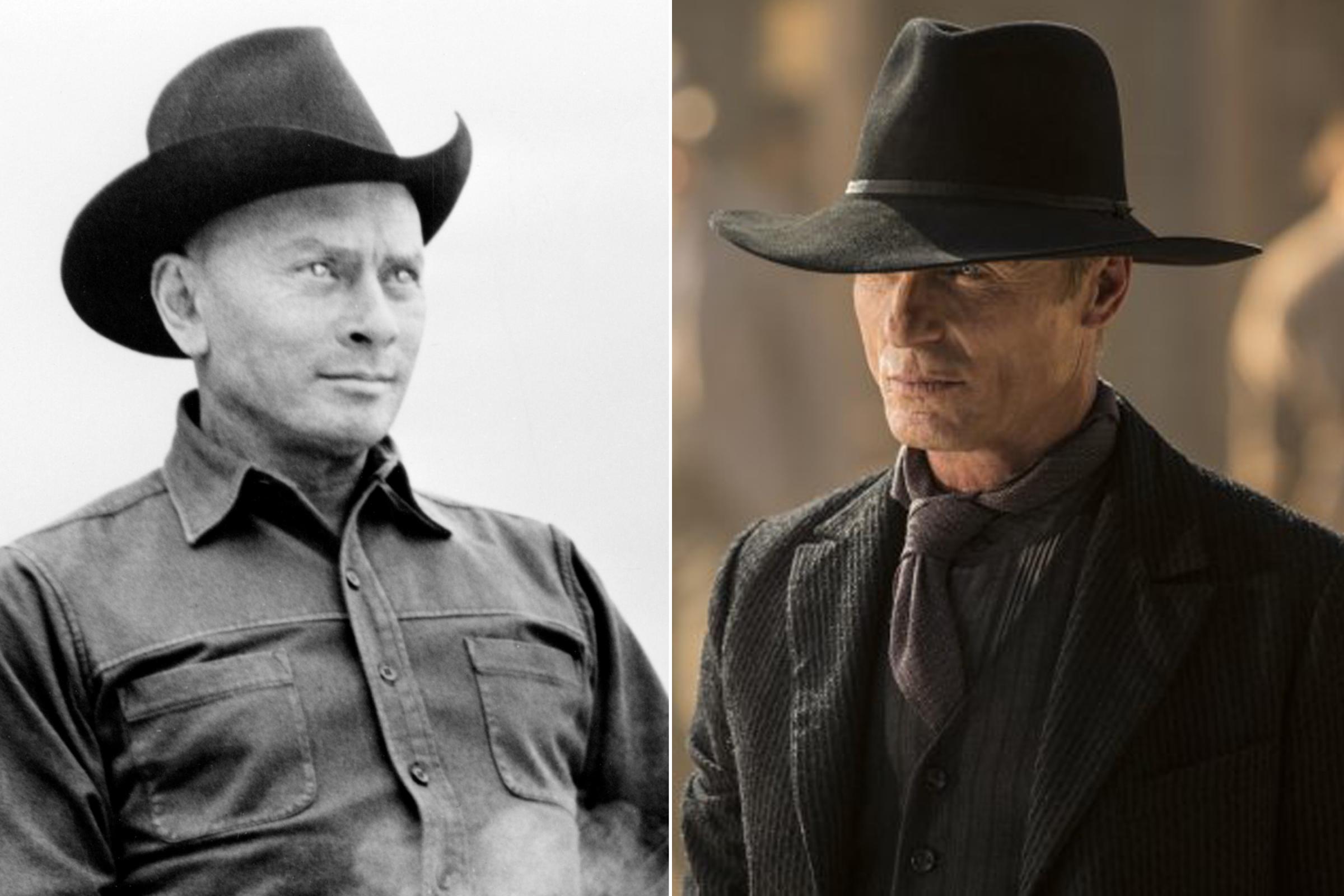
The Bible
When Dr. Ford talks to Bernard in a complaint session about how there’s nothing left to achieve, he says soon we’ll “call forth Lazarus from his cave.” This references the story of Jesus Christ resurrecting Lazarus after he had been dead for days. This conversation signals that Ford’s God complex gives him hope that even when all is lost, he still has the power to bring people or creations back to life.
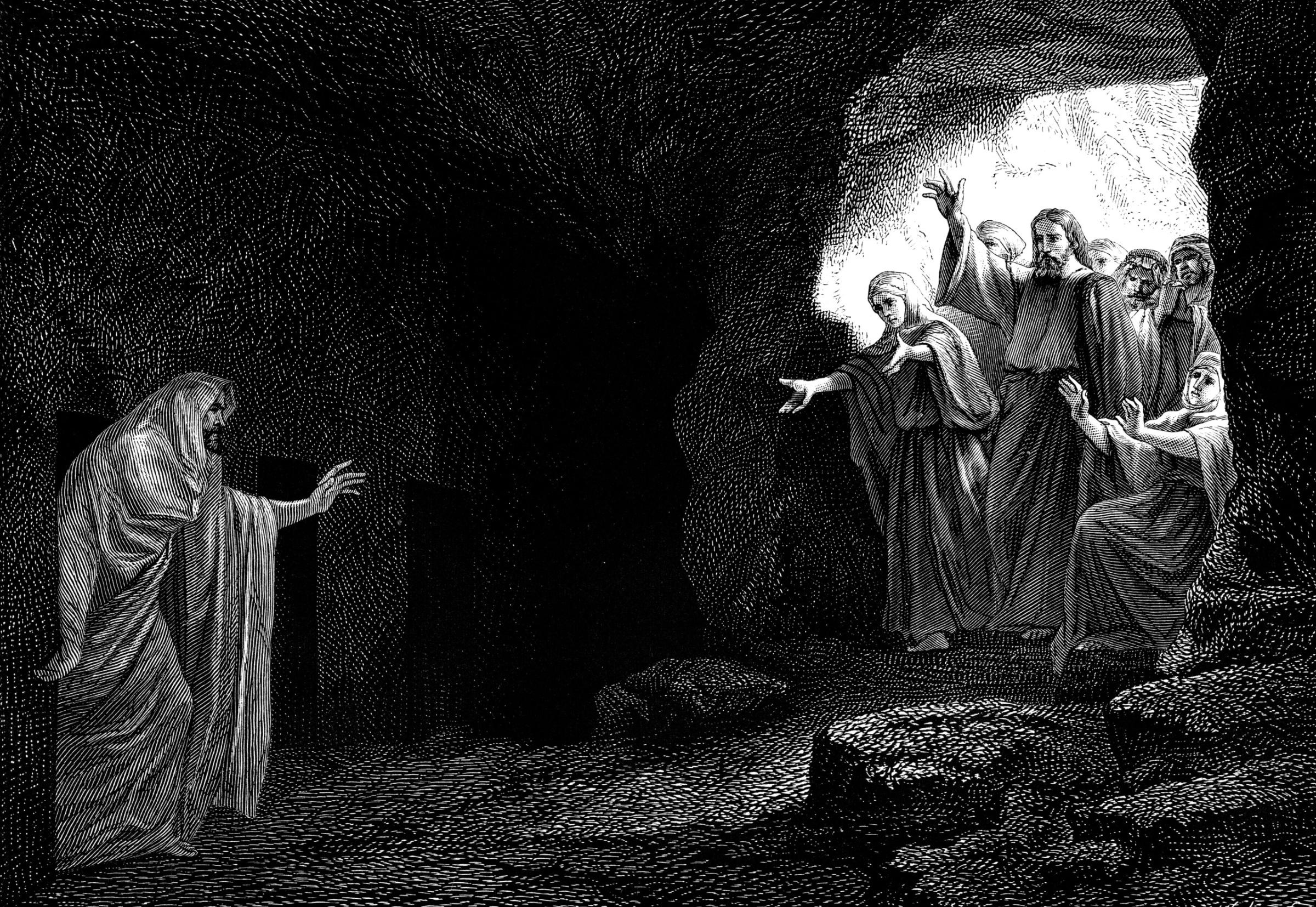
Herd Mentality
Exhibit A: Total horse girl, Dolores is always talking about her animals. When she watches a magnificent herd with Teddy, he’s like “Never understood how you keep them all headed in the same direction.” Her answer: “see that one? That’s the Judas steer, the rest will follow wherever you make him go.” In the show, the horses go wherever they’re told, a lot like the hosts themselves.
But that wasn’t the only example of horses as a reference to robot life. It’s often Dolores’s own horses that warn her about danger. “My father wouldn’t let them roam this close to dark,” she remarks. Conformist by design, all they know how to do is be controlled in every aspect, and they’re not allowed to roam “off-path.”
In the fourth episode, it dawns on Dolores that her family was always bringing their obedient herd “to the slaughter.” She has this revelation nearly halfway through the first season, when Dolores is waking up to her harsh reality — she’s just another cog in the Westworld livestock machine — and her life is may be as ill-fated as her horses.
Snakes

When Dr. Ford goes on a walkabout with a young boy who resembles a wee little Dr. Ford, the park’s director manipulates a snake with his mind. Later, a stone-faced young girl reveals that the curious Man In Black has to go “where the snake lays his eggs” to get to the deeper level of the game – the maze. In mythology, snakes symbolize wisdom and all the unseen knowledge lying underneath Earth, so discovering mysteries is the dynamic at work whenever snakes pop up.
In the fourth episode, the Man in Black gets closer to solving the puzzle. He meets Armistice (Ingrid Bolso Berdal), who he believes has a key clue to guide him to the maze: the story behind her snake tattoo. She’s determined to kill all of the masked murderers responsible for her mother’s death, and uses their blood to paint the macabre body art that curls across her frame. Once Armistice finds the worst baddie of them all, Wyatt, she can fill in the snake’s head with red ink to complete the picture.
Psychology

The powerful park’s founder Dr. Ford fills Bernard in about his old gearhead partner, Arnold, who was obsessed with the theory of the bicameral mind. Introduced by Princeton psychologist Julian Jaynes in The Origin of Consciousness in the Breakdown of the Bicameral Mind (1976), the real-life theory explores the idea that tragedy forces people to acquire “consciousness.”
Jaynes proposed that primitive humans have zero consciousness, so in order to solve problems, they develop inner voices, which popped up as commands people could actually hear. They attributed these “voices” to gods and kings, and the new theory split the brain into sides — the left for speech, and the right, for churning out these “inner commands.”
In the show, when a trembling Dolores points a gun at her unsuspecting attacker, she’s only able to finally pull the trigger when she hears a man’s voice ordering her to “kill him” (that you, Arnold?) Presumably, this is how we know it’s the right brain commands that internally dictate her defiant behavior. Like the rest of the hosts, Dolores hasn’t evolved to think for herself.
Relevant line from the book that sounds a lot like Dr. Ford’s passion project: “What ineffable essences, these touchless rememberings and unshowable reveries!”
More Must-Reads from TIME
- Why Trump’s Message Worked on Latino Men
- What Trump’s Win Could Mean for Housing
- The 100 Must-Read Books of 2024
- Sleep Doctors Share the 1 Tip That’s Changed Their Lives
- Column: Let’s Bring Back Romance
- What It’s Like to Have Long COVID As a Kid
- FX’s Say Nothing Is the Must-Watch Political Thriller of 2024
- Merle Bombardieri Is Helping People Make the Baby Decision
Contact us at letters@time.com